#historical reconstructions
Explore tagged Tumblr posts
Text


A 19th century whaling captain's quarters on his ship and his parlor at home: reconstructions from the Provincetown Museum, Provincetown, MA.
#whaling#age of sail#life at sea#captain's quarters#life ashore#19th century#historical reconstructions#museum exhibition#apologies for the bad lighting on the parlor one#I did my best
106 notes
·
View notes
Text
So, I saw this image on Facebook, and it was supposedly showing what Queen Nefertiti would have looked like in real life:

Now, I thought this AI generated garbage was just truly terrible on a number of levels; first off, she looks wayyyyyy too modern - her makeup is very “Hollywood glamour”, she looks airbrushed and de-aged, and as far as I’m aware, Ancient Egyptians didn’t have mascara, glitter-based eyeshadows and lip gloss. Secondly, her features are exceptionally whitewashed in every sense - this is pretty standard for AI as racial bias is prevalent in feeding AI algorithms, but I genuinely thought a depiction of such a known individual would not exhibit such euro-centric features. Thirdly, the outfit was massively desaturated and didn’t take pigment loss into consideration, and while I *do* like the look of the neck attire, it's not at all accurate (plus, again, AI confusion on the detailing is evident).
So, this inspired me to alter the image on the left to be more accurate based off the sculpture’s features. I looked into Ancient Egyptian makeup and looked at references for kohl eyeliner and clay-based facial pigment (rouge was used on cheeks, charcoal-based powder/paste was used to darken and elongate eyebrows), and I looked at pre-existing images of Nefertiti, both her mummy and other reconstructions. While doing this, I found photos of a 3D scanned sculpture made by scientists at the University of Bristol and chose to collage the neck jewellery over the painting (and edited the lighting and shadows as best as I could).

Something I see a lot of in facial recreations of mummies is maintaining the elongated and skinny facial features as seen on preserved bodies - however, fat, muscle and cartilage shrink/disappear post mortem, regardless of preservation quality; Queen Nefertiti had art created of her in life, and these pieces are invaluable to developing an accurate portrayal of her, whether stylistic or realistic in nature.

And hey, while I don't think my adjustments are perfect (especially the neck area), I *do* believe it is a huge improvement to the original image I chose to work on top of.
I really liked working on this project for the last few days, and I think I may continue to work on it further to perfect it. But, until then, I hope you enjoy!
Remember, likes don't help artists but reblogs do!
#Nefertiti#Queen Nefertiti#Ancient Egypt#Facial Reconstruction#art#artist#digital artist#historical#history#historical figure#ancient egyptians#artistic interpretation#historial facial reconstruction#Neferneferuaten#Queen Neferneferuaten Nefertiti#illustration#digital art#digital illustration
7K notes
·
View notes
Text



My most recent make is this ancient Minoan ensemble! It consists of a tunic (heanos) worn under a flounced wraparound skirt shaped like a double-bladed axe (labrys). Despite how heavy the linen skirt is, the entire outfit is surprisingly easy to move around in. I even waded into the river to rescue a bee!
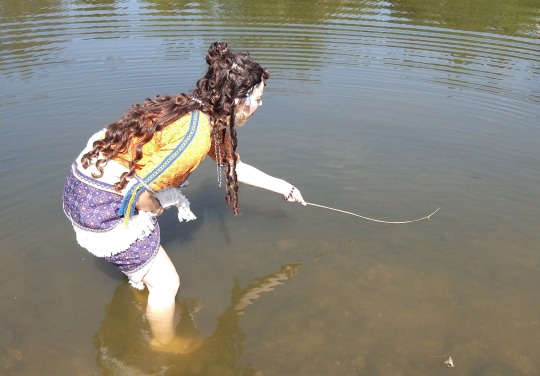
Hot Girl Activities
#minoan crete#minoan#ancient greece#greek mythology#historical costuming#bronze age#my costumes#clothing reconstruction#hot girl summer
5K notes
·
View notes
Text





Audrey Hepburn in "My fair lady" photographed by Cecil Beaton, 1964
#my fair lady#cecil beaton#film costume#mdptheatre#costume recreation#costume reconstruction#costume#historical#20th century#1960s#phptography#historical costume
186 notes
·
View notes
Text
The long history of the Egtved Girl's dress


The Egtved Girl's burial (1370 BC) // The archaeologist's sketch after the excavation (1921)

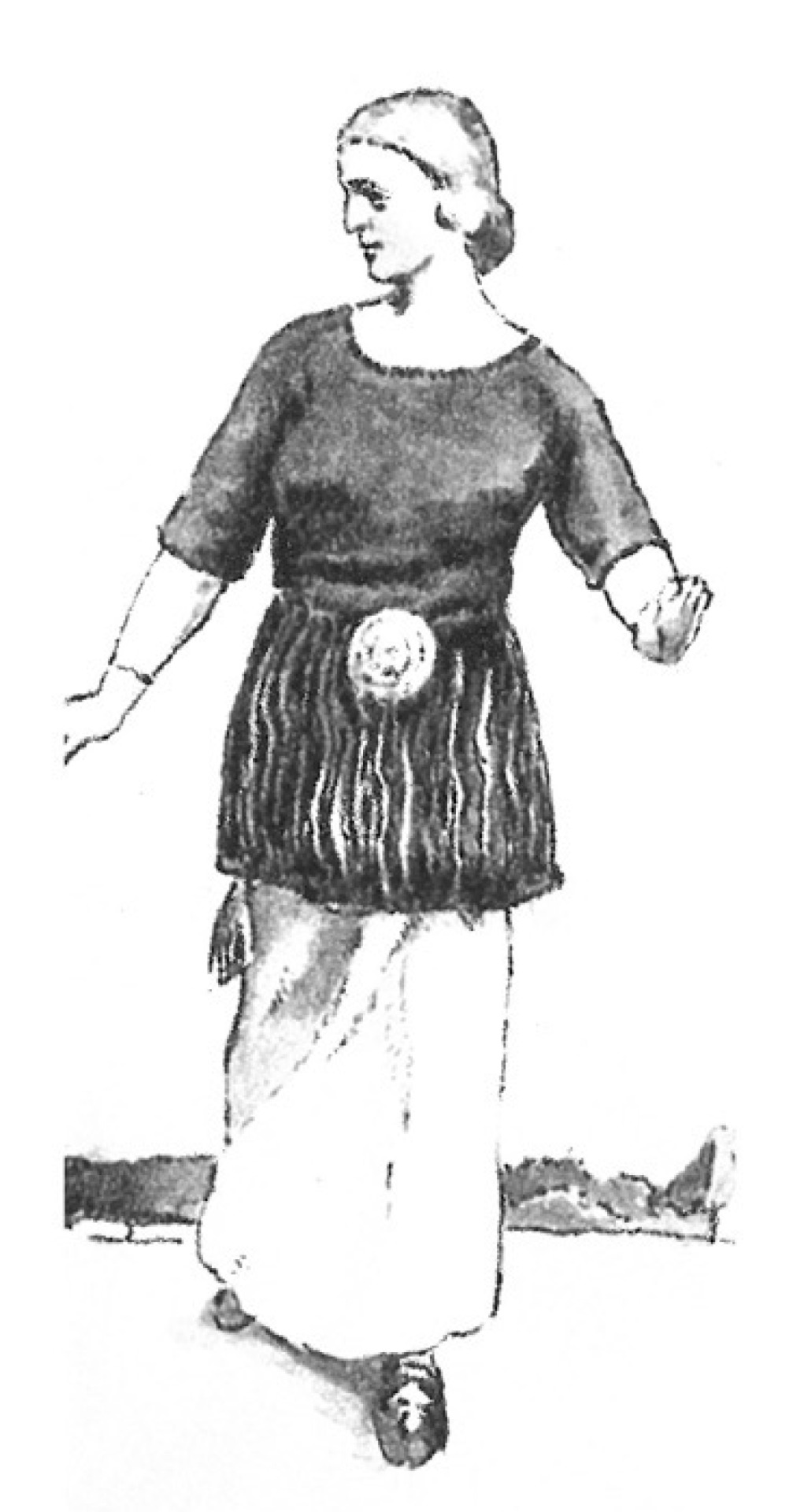
Lise Fenger. The first attempt at reconstruction of the dress (1938) // An illustration from "Das Kostüm Werk" by Wolfgang Bruhn, Max Tilke (1941)
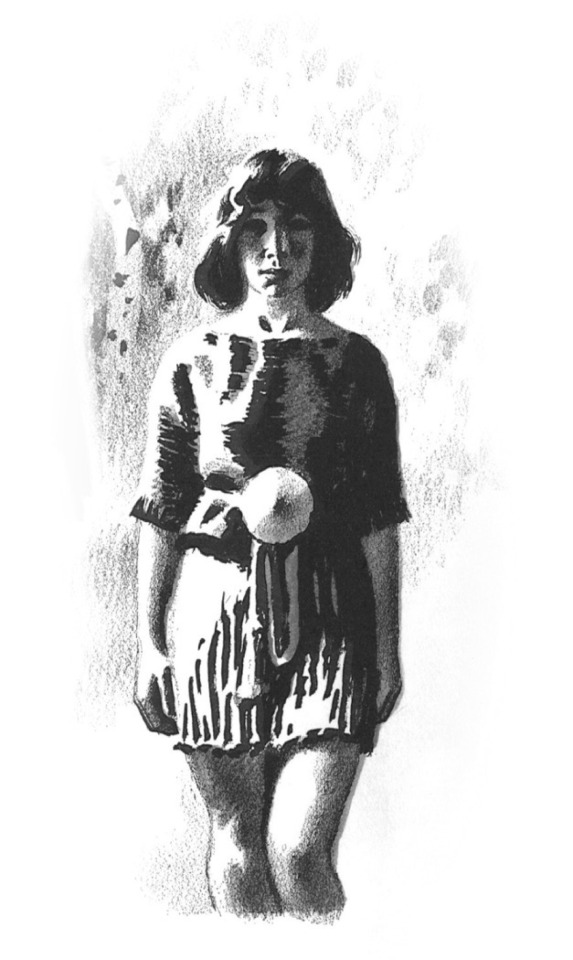
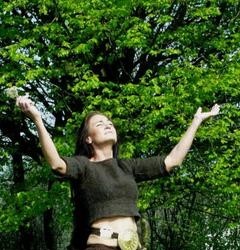
An illustration by Aage Sikker Hansen (1944) // Anni Brøgge performing a ritual dance, photo by Flemming Kaul (1999)
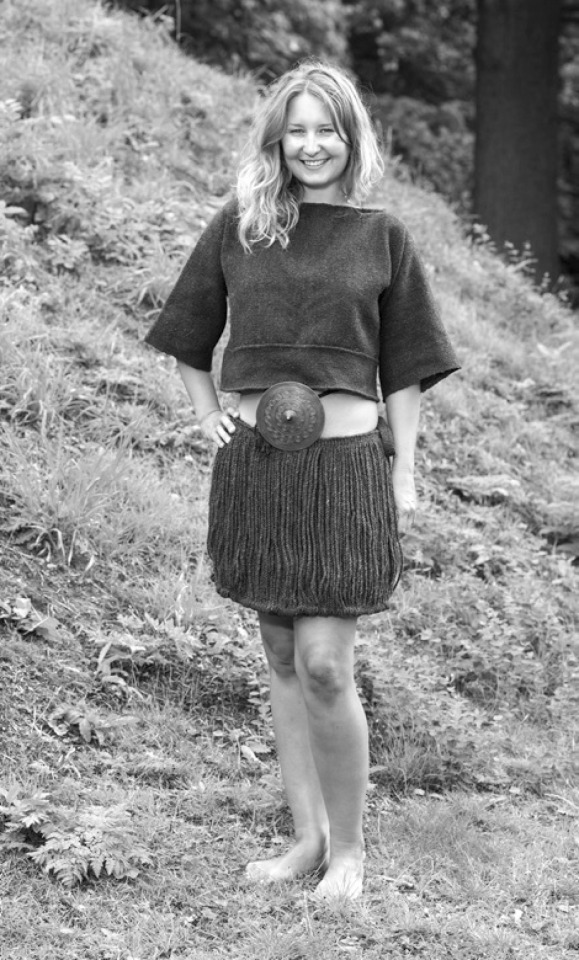

Modern reconstruction for the National Museum and Sagnlandet Lejre
Despite being preserved in almost perfect condition, the Egtved Girl's (c. 1390 – c. 1370 BC) clothes have been a controversial topic for an entire century. Because of how unexpectedly revealing (for our expectations) they look, these Bronze Age top and skirt's depictions have been repeatedly changed to be more "modest" and better fit the 20th century's sensibilities. Only by the end of the 1990s, Egtved Girl's clothes have been reconstructed accurately.
Sources:
The Egtved Girl
Spor fra Metallernes tid
Crop top er ikke nyt i Jylland
Bronze Age dance
#egtved girl#history#mummies#photography#art#illustration#clothes#fashion history#historical reconstruction#stereotypes#censorship#death#historiography#culture#prehistory#added some text for clarity#archaeology#my post
885 notes
·
View notes
Text
Penelope's weaving
aka I, an archeologist, am here to review the accuracy Penelope's loom in the 2024 movie 'The Return' because I want to avoid thinking about all my papers due next week. For context, I am currently writing my bachelor paper on Minoan textiles, and while I am definitely not an expert, I do know a thing or two about bronze age textile technology
So first point of pedantry: that is not at all a bronze ago loom.

I can't say exactly say what kind of loom this is, as I've only studied bronze ago looms. Whatever kind of horizontal/draw/treadle loom this is, I can confidently state that this would not have been used in Mycenaean times. I'd say that we only see these kinds of looms in Europe from the medieval period, somewhere around the 11th century.
In the bronze age, there are three types of looms in use (as far as we know). The horizontal ground loom, the two beam loom, and the warp-weighted loom. Most traditionally, we see iconography depict Penelope weaving on a warp-weighted loom, like this beautiful vase does.
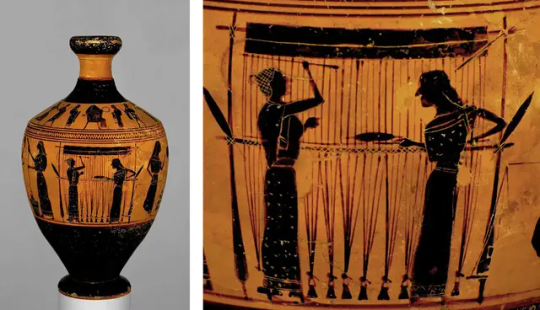
We can clearly recognize this as a warp weighted loom, because we can see the weights: they're the little triangles at the ends of the vertical threads (the warp). The warp-weighted loom is also the only loom we can find archeological remains of, as the loom weights were often made of clay (sometimes pebbles), while the other types of looms were purely wooden.
Furthermore, I have genuinely no clue what she is supposed to be doing with her weaving in this short clip. There is no visible shed, which is the separation between the warp yarns, through which you pull the weft, so that you can actually weave something.

Here's a picture of the shed, as you can see, every other thread is pulled up, and the shed can then be switched around to create a woven pattern.
In the short clip we see, she seems to just be drawing some threads through the warp, which is more than a little nonsensical. If one was weaving a smaller fabric or a tapestry, one could perhaps use a pin or sword beater to pick up individual threads of the warp to pass your horizontal thread (the weft) under, and create patterns that way. That is still not what she is doing here. Additionally, she is weaving a solid red fabric, which would not make it a very interesting tapestry.
Perhaps she's undoing her weaving in this scene? It would make a little more sense if that was what she was doing, as no one would ever be actively weaving at night! It required a lot of light to be able to see what you were doing. Candle light just did not suffice. It still looks a little strange to me, as I don't actually see any woven fabric on the loom that she could be undoing. It's all just loose warp threads.
Honestly, it kind of looks like they picked up a loom from the nearest interactive history museum and plunked it into their movie without doing any research. I think it's a little sad that when adapting a work that centers weaving as much as the Odyssey does, the filmmakers did not do any research into bronze age weaving. You really don't need to be writing a paper on this stuff to find sources for this!
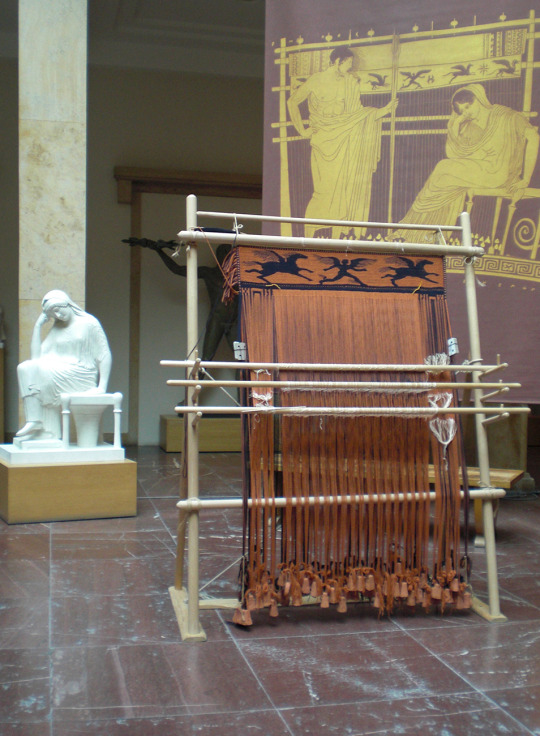
I'll just leave you all with this: a beautiful reconstruction of a warp-weighted loom, with the beginnings of a tapestry as Penelope would have woven it. You can see the loom weights at the bottom, and the sticks in the middle called the heddles, which were used to create the shed I discussed earlier. This is part of the Penelope project.
#archeology#the odyssey#the return#the return 2024#penelope of ithaca#odysseus#if someone knows more about horizontal looms feel free to correct me#theyre definitely out of my area of expertise#i honestly dont really care if movies are historically accurate or not#historical accuracy is in itself an unattainable goal#as even archeologists cannot accurately reconstruct the past#but also#this is just a really obvious mistake#its a little lazy imo#if youre going to adapt a book where weaving is such an important theme#maybe do a quick google search#textile history#additionally i have not watched the movie#only the trailer#so if the movie says anything that contradicts what i said here im sorry#maybe this isnt a loom at all and its a warping frame or something lmao
117 notes
·
View notes
Text
Nations going to wax museums could either be the funniest or saddest thing ever. Like on one hand, they'd be goofing around and taking photos of themselves fake kissing or flipping off historical figures.
But on the other hand it would probably be really jarring to see a lifelike statue of someone long dead you knew. Like I imagine France seeing a Napoleon wax figure and immediately straightening up like "Oh putain it's my boss he's back" before remembering he's been dead for centuries.
Facial reconstructions probably don't have as big of an effect. I imagine some nations are actually consulted during a reconstruction. They laugh at the inaccurate ones. like England would probably see one of a past king and be like "Make him look more inbred". Also England would know what Shakespeare actually looked like, so in the Hetalia universe, there would probably be super accurate art of Shakespeare.
#hetalia#hetalia headcanons#aph france#hws france#francis bonnefoy#hetalia france#aph england#hws england#hetalia england#arthur kirkland#there are definitely wired videos of nations describing historical figures#then they're shown the reconstruction at the end of the video#reactions are mixed
139 notes
·
View notes
Text







Some moments of the Moscow festival of historical reconstruction “Times and Epochs” 2024
#Roma#ancient rome#ancient history#ancient world#moscow#history#historical reconstruction#elena kukanova#veterum chorus#LegIM#dance#artists on tumblr
105 notes
·
View notes
Text


Between 2018-2021 I worked with archaeologist Dr Sophie Hay, Ancient Historian Prof. Andrew Wallace-Hadrill, Director of the Cambridge Schools Classics Project (who make the CLC Latin course!) Caroline Bristow and her gorgeous team, and legendary historical children’s fiction author Caroline Lawrence, to illustrate a novel and ancient history course about the life of Pompeiian freedman Amarantus and his neighbours in Insula 1.9
The story is a year in the life of Amarantus, following the events he experiences, including the devastating earthquake of 63BCE and his manumission (by a certain local natural-history-loving magistrate), the traditions of a Roman life, and the likely inhabitants of the rest of his block, based on the buildings and finds in Insula 1.9.
It acts as an Ancient History/Classical Civilisation (non-language) prequel to the Latin Caecilius stories (CLC Book 1) and there are some Caecilius-themed visual easter eggs 😁
The course has been designed for even non-specialists to be able to pick up and teach, entirely for free, to help bring Ancient History/Classics into schools.
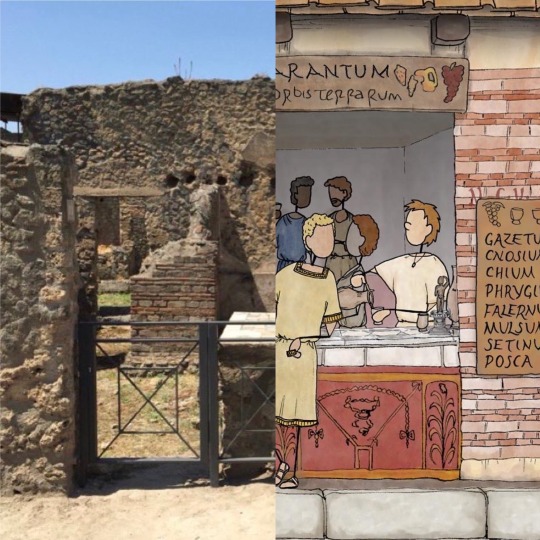
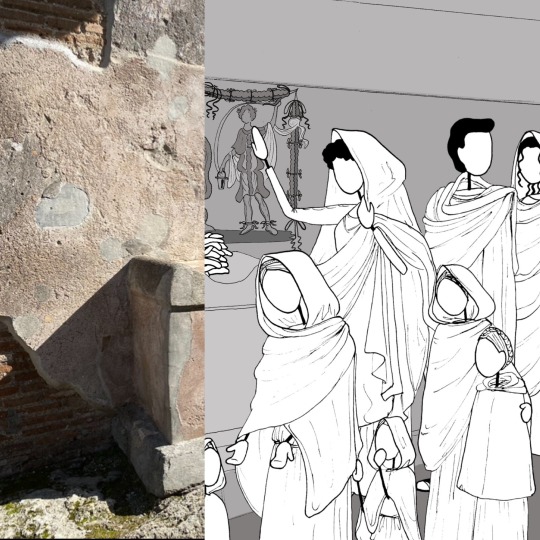

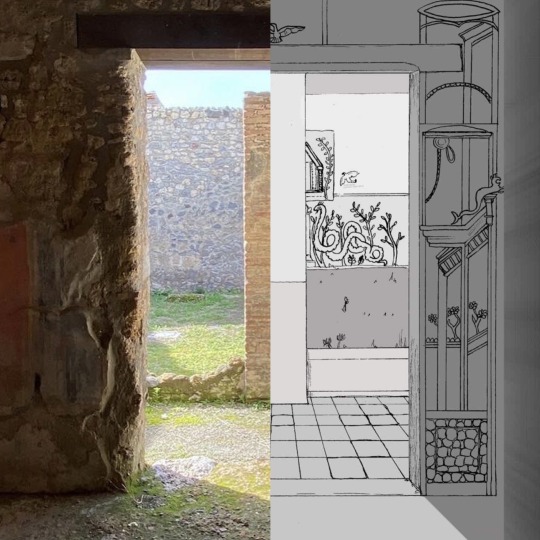

We made the images in grayscale so they could be cheaply printed and reproduced in PoD books/PDFs for schools, but made some images in full colour for the website and book cover to show the diversity of the Pompeiian world. They’re all based on archaeological evidence and research and each one took hours of discussion and argument (and occasional paper models) to get right. (And I’m proud to say my rebuilding of some ruined structures like the Herculaneum Gate has been approved by other Pompeii experts, like the Cooleys 😁)
The entire book and course is massively researched and based on archaeological findings, and is FREE on the CSCP website: https://CambridgeAmarantus.com/home
Or you can buy the book PoD via these links: https://www.cambridgescp.com/array/buy-book

Bonus Roman Chickens (the precursors to my Roman History Chickens series!): the cockfighters Odysseus and Polyphemus! (And yes cockfighting is terrible and I’m glad we don’t have it any more)
#roman history fandom#Roman history#historical fiction#archaeology#Pompeii#caecilius est in horto#CSCP#bar of Amarantus and his neighbours#amarantus#ancient history#teaching#teacher#classics teacher#classics teaching#tagamemnon#illustration#ancient history illustration#archaeological reconstruction#freebies#free education
339 notes
·
View notes
Text

Here have a little doodle I did testing out historical paint recipes (yellow ochre, red ochre, and cochineal lake mulled with gum arabic:)
#one thing about me is I can be relied on to pick up some random new hobby every damn week#good omens#good omens fanart#fast and shitty fanart#historical reconstruction
33 notes
·
View notes
Text

Versions of the color reconstruction of Apollo Belvedere done by Stephen Chappell, an American digital artist. These pieces were done for the exhibition Qui es-tu, Apollon? (Who are you, Apollo?) that is currently held by the Juliobona museum, Lillebonne, France.
This is my personal favorite part of the artist's explanation as to why he chose specific colors for this statue (beyond those derived through polychrome research):
As for the chlamys (cloak), I felt the color red was appropriate for this moment where Apollo is a death bringer, a warrior. This isn’t Apollo the kitharist, the musician; this isn’t Apollo the lover. This is the sun god with his corona of golden hair, loosing a golden arrow to kill the monstrous python. His cloak had to be red.
The exhibition will be open until November 30, 2023.
More on the process behind it and the exhibition: 🏺
#APOLLO 🌞#TESOROS 💍#art#greek mythology#apollo#apollo belvedere#color reconstruction#historical reconstruction#juliobona
189 notes
·
View notes
Photo
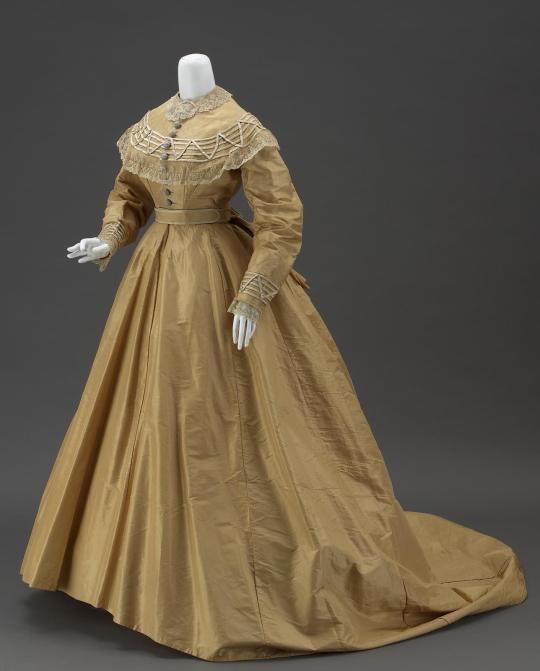
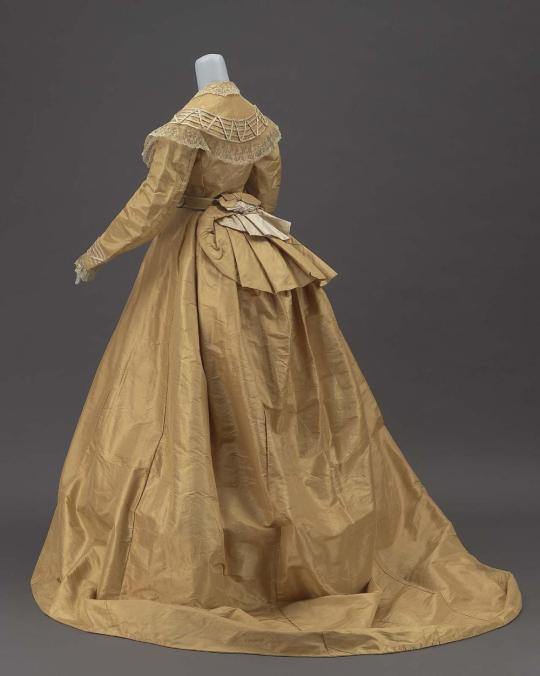
Dress
c.1865
United States
Museum of Fine Arts, Boston (Accession Number: 50.3988a-c)
#day dress#fashion history#historical fashion#1860s#crinoline era#united states#19th century#reconstruction era#gold#brown#silk#taffeta#mfa boston#i am intrigued by this odd peplum situation#very proto bustle look
423 notes
·
View notes
Text
The most recent culture of the Upper Palaeolithic (the Late Upper Palaeolithic) in western and Central Europe is the Magdalenian, 20,000 - 12,500 years ago.

A man of the Moravian Magdalenian. He holds a spear-thrower using the principle of leverage, and a spear with a bone projectil point with saw-like razor-sharp microlites. The horses on his clothing are depicted according to a decorated object found in the Pekárna Cave (the Moravian Karst).

In front of the tent in the Pekárna in Moravian Karst cave. The large cave didn´t espace notice of the Magdalenian hunters, which were tracking the cariboos herds around the karst areas. In the cave of Pekárna, the rank of fireplaces was discovered across the corridor, which was probably the standing place of the tents. The cave climate was convenient for fabrication of the cariboo meat. The karst area enabled the hunters to use the terrain for building perfect traps.

Fascinating artefacts found in the Pekárna cave: tiny bone needles, Silicit tools, embedded into boned or horn handgrip, harpoons, blade-liked, decorated artefacts and fascinating portrayals of the scenes of the wildlife on the horse ribs (grazing horses, fighting bisons).

A camp of reindeer hunters of Petersfels
The picture takes us to southwest Germany, the well-known site of Petersfels by Engen. The narrow valley became a trap for hunted reindeer. Reindeer were killed there on a large scale, as the remains of their bones witness. The peculiarity of this picture is that the photographic studies were not created artificially, but were made just on the site, where well-versed fans displayed their home-made clothes, tents and Magdalenian weapons
Notice the antler heads of the throwing weapons, which were made so well that they can be compared with the artistic level of carving in butts of the recent firearms.

One of the most beautiful and imaginative engravings on the thrower represents two fighting Capricorns. The Trois Frères cave in France. The image reconstruction represents the artefact in it´s original form (the heads of the Capricorns are not preserved).

A Magdalenian bone points with microlites A bone point from the Drátenická Cave in the Moravian karst. This artefact is now in the Institute Anthropos, which is a part of the Moravian Museum (Moravské zemské muzeum) in Brno. You can see (the lower part to the right) an impression of the former careful and fine binding. The reconstruction depicts the procedure of its piecing together.

The convenient terrain helps during the hunting. The Northern societies often hadn´t have enough members for driving the gregarious animals. Therefore, they built stone pillars, which the hunted cariboos were not able to distinguish from the hunter.

The bone needles found in abundance both in Petersfels and the Moravian Karst are different from those of the Gravettian. The woman in the picture is sewing a piece of clothing using an awl and a needle. The man is repairing the bone point of a weapon. He easily replaces individual broken segments of the cutting edge with new ones. To the left from him, there is his equipment, such as throwing weapons, lamps, a chieftain’s baton, a flute and bone points.

The reconstructional imitations of clothes dating back to the era of the Magdalenian reindeer and horse hunters. The first clothing is exhibited in the Museum of Engen. You can see decorative patterns made according to an ornamented shovel-like object found in the Moravian Karst on the right clothing.

A spear-thrower was ideal for hunting animals living in herds, such as horses and reindeer. It was capable of shooting a maximum amount of projectiles within a minimal period of time. The accuracy of shots at a mass of running bodies was unimportant, the work was completed by sharp points. Most likely massive stone pillars were used when driving reindeer. Reindeer avoided them in the same way as they avoided people. That is why the Magdalenians preferred such environment where limestone screes, of which they erected the pillars, were available, e.g. outcrops of limestone, which are characteristic of the karst areas. The whole life of these people was closely connected with animals living in herds, and it formed their culture. The Magdalenian settlements came to Central Europe, namely to Poland, 16,000 years ago and to Moravia about 13,000 years ago

The representation of women, the unmistakable Magdalenian Venuses, was quite curious. Women’s figurines hardly bore any detail, they were often just outlined, and their bottoms were always stuck out. Some small figurines had holes for hanging.

One of the few Magdalenian Venuses that provided at least some information about her hairdo.
#Libor Balák#archaeology#prehistory#stone age#paleolithic#art#historical reconstruction#venus figurine#magdalenian culture#hunter gatherer#ice age#brno mention!!!!#my upl#european prehistory
42 notes
·
View notes
Text
Minoan Heanos
The distinctive open-front dresses worn by Minoan women are probably even more iconic than the multi-layered kilts. Over time, there's dispute whether the garment is one piece or a separate bodice and skirt, but currently the one-piece theory is in ascendance.

The word heanos is derived from the Linear B logogram *146, wehanos. The wes- prefix, which is the squiggle in the middle, indicates a garment. Bernice Jones believes that this logogram represents the garment worn by Minoan men and women.
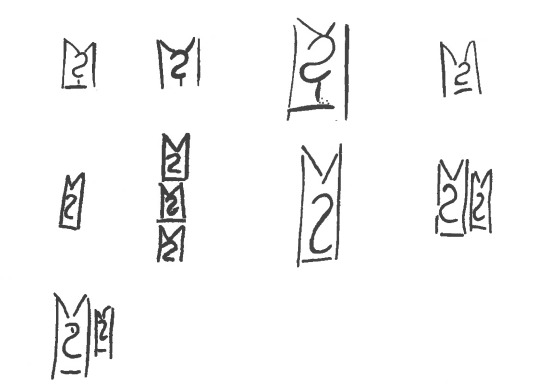
Marie-Louise B. Nosch, The Textile Logograms in the Linear B Tablets, pp 133-138
More research and construction below the cut:
The theory that the garment is a full-length tunic is further supported from imagery from the time, like these figures from the c. 1400 BCE Hagia Triada Sarcophagus. This detail from the sarcophagus shows three figures in some kind of procession, 2 women and 1 man. The woman at left wears a tunic with some kind of pelt as a skirt, and the other 2 figures wear tunics without anything over them, showing that they are one continuous, ankle-length garment.
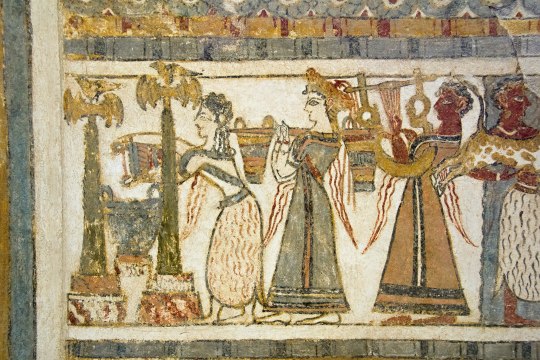
Some of the most important resources for interpreting how the heanos was constructed comes from the two women depicted in the House of the Ladies in Akrotiri, wherein the side seams of the tunic are clearly visible running along the side of the body and under the arm.
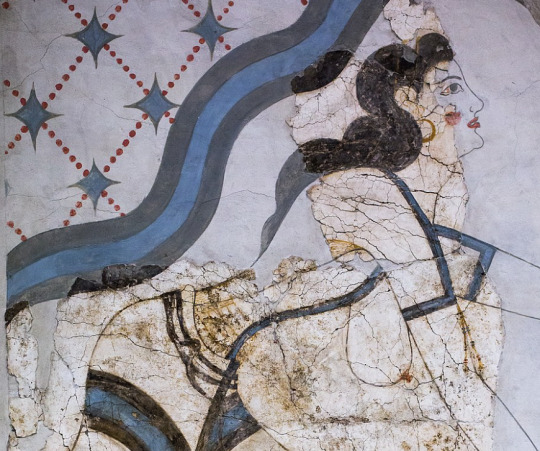
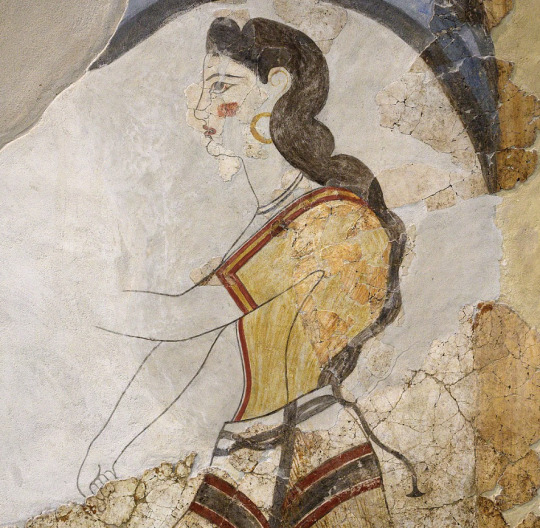
details of figures from the House of the Ladies, Akrotiri, via Wikimedia Commons
advadbsvasb
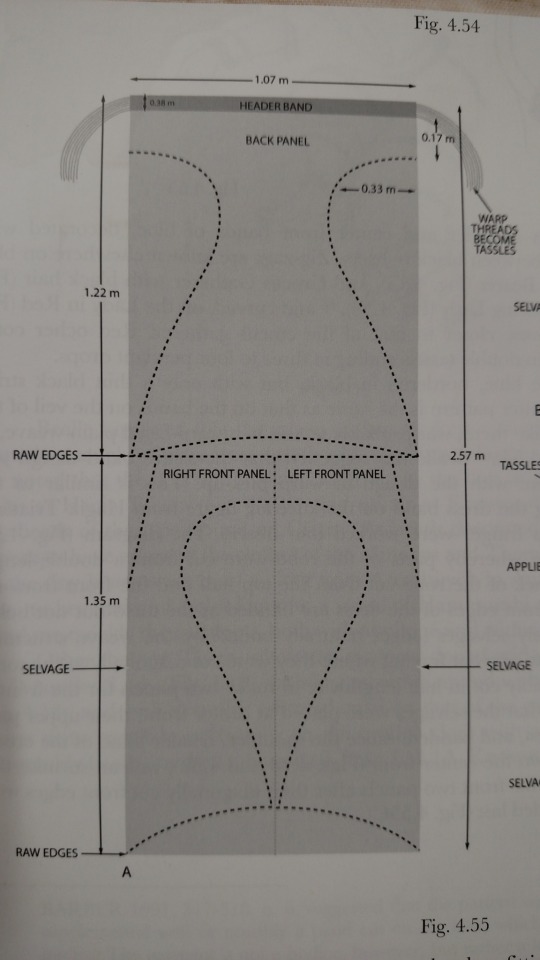

Diagrams from Bernice Jones' book Ariadne's Threads, p. 82, via Gorgeous Tangents
The heanos itself is made of 3 pieces of fabric: 1 back and 2 fronts. These diagrams show a concave hem like on the labrys-shaped kilt but I went with a straight hem, which is an equally valid option. The end of the sleeves are level with the edge of the hem at the widest point. This would probably be the width selvage-to-selvage on the fabric, being narrower than fabric widths commonly are today. There are 4 seams: the shoulder seam, the two side seams, and a front seam (optional, but recommended if you would prefer not being arrested.) It may be tempting to fold the fabric across the shoulder, so the only sewing is side seams and a neck hole, but this makes a weaker garment overall. I used this as a shortcut in my fitting muslin and it caused tears and weak points at the three points of the front opening.

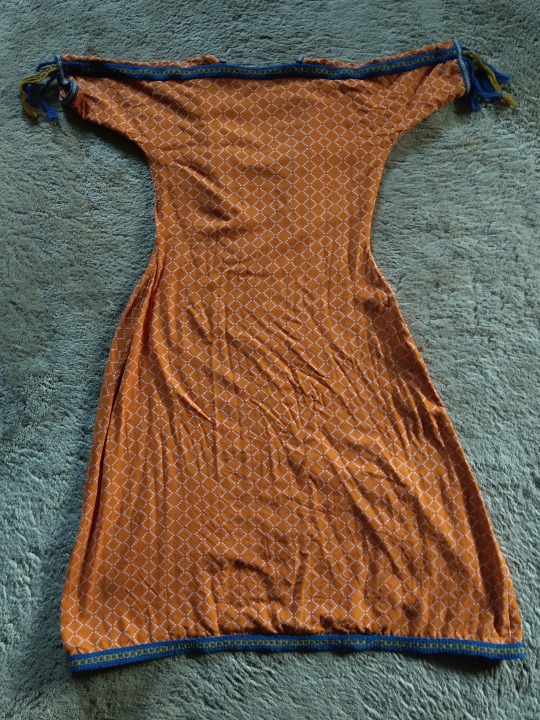
my fabric was a lightweight, moderately loose-woven cotton with a supplementary weave pattern in squares and diamonds. Linen or wool would have been more accurate but also? much harder to find from online quilting stores selling fabric for affordable prices. The main fabric is dark orange and the pattern is made out of pink/lilac threads. This weaving technique resulted in a LOT of long floats (unsecured expenses of thread) on the back--you can see how the wrong side of the fabric is much pinker than the right side. These floats could snag easily if I wasn't careful, so while it made a very effective visual for this tunic, I do not think that this fabric type would be viable for everyday wear. I'll leave it to people who actually know about weaving to ponder what more accurate weaving techniques would be.
Construction
The overall pattern is basically a T-shaped tunic, and the most important measurements are shoulder circumference, shoulder width, bust circumference, and the shoulder-waist length. In addition, you need measurements for the bicep, waist, shoulder-navel length, and hip circumference. After working out the fit with a muslin, I ended up with this pattern, 1 of 4 identical quarters.

Your first impulse may be to make the tunic very close-fitting, since the depictions in frescoes are skin-tight, but since the pattern has no added gusset this is a recipe for Cannot Move Arm. So I gave a very generous curve under the arm, which also made the dress look better when my arms were down, avoiding armpit wrinkles. I continued that ease into about an extra 2 inches added on to my waist measurement and plenty of extra space around my hips so that I could do exciting things like Sit Down.

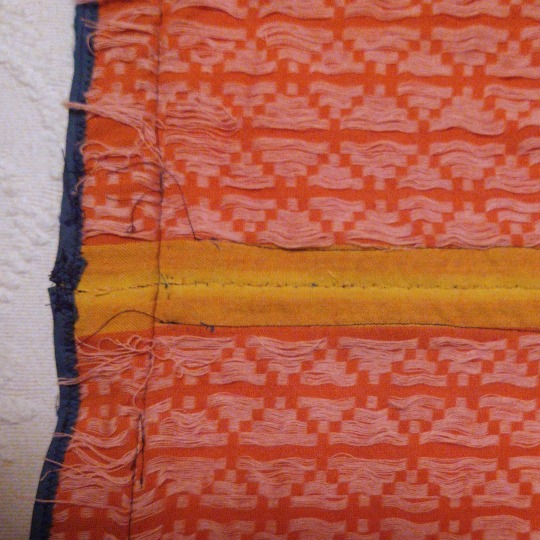
I sewed the shoulder and side seams using the machine, and felled the raw edges on each side of the seam by hand with a whipstitch. I foided back the front edges of the v-neck instead of cutting them, which was a tip I got from the Gorgeous Tangents blog. This strengthens the neckline and keeps it from stretching, and also means that everything can be readjusted if you have size fluctuations or just want to modify the tunic into something more or less modest.
I whipstitched the front edges together by hand--the contrasting selvage didn't matter because it would be covered up by trim. I ended up cutting the tunic a liiiittle shorter than I wanted, so I finished it with some leftover bias binding instead of hemming it to conserve as much length as possible.
Trim

I custom-ordered the woven tape trim from Long Creek Mercantile. Both are made of wool--the "header band" and the hem trim are 1 1/4" wide and the center-front and cuff trim are 3/8" wide. I observed that most images of the Minoan heanos show trim with two colors at most, in a simple geometric or linear pattern, so I consciously restrained myself from ordering anything more elaborate. The clothing on Minoan frescoes is characterized by strongly contrasting colors, so blue trim was the most obvious, and best-looking option. Orange tunics with blue trim appear multiple time in art like the "Dancing Lady" fresco from Knossos:
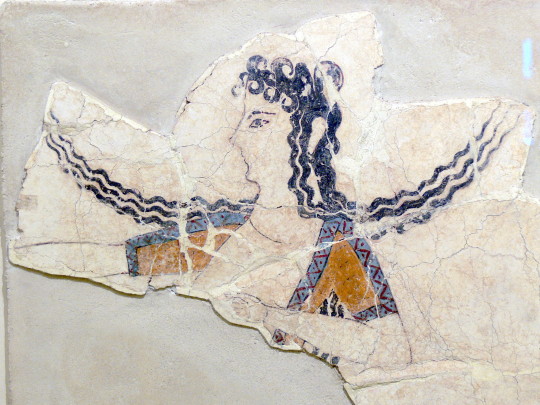
Dr. Jones suggests that the band across the shoulder would historically have been a header band--a band of threads woven at the beginning of a project in order to properly space the warp bands (see her diagram at the beginning). That may be a reason why the shoulder trim often depicted under the front or sleeve trim, as shown above. Regardless, the trim almost always coordinates.
I sewed on the shoulder trim by hand, the sleeve and hem trim by machine, and the center-front trim with a combination of both.
Tassels
Many frescoes from Akrotiri and Hagia Triada show the ends of the supposed header band turned into tassels. This embellishment is not universal among heanoi, as you can see from the "Dancing Lady" above, but it does add a fun little something!
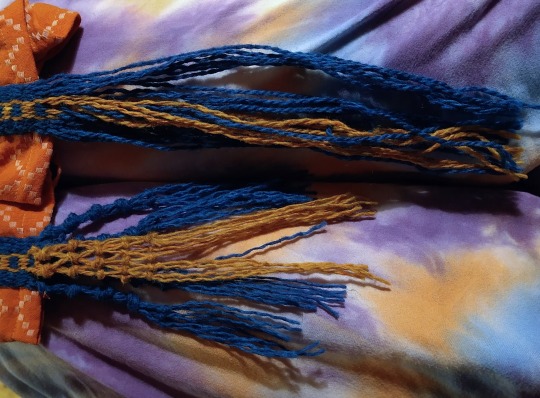
(yes, my Lounging Pants are very fashionable)
I turned the excess ends of the shoulder "header band" trim into fringes, knotting the yellow ones into a lattice and turning the blue yarns into tassels. The lattice-tassel appears on a fresco from Hagia Triada:
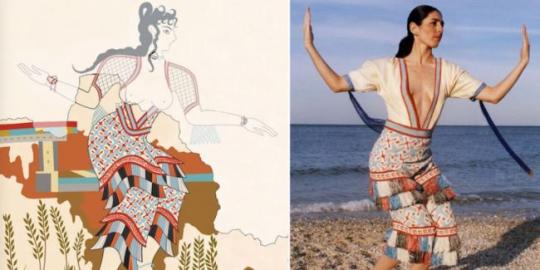
Reproduction of fragmentary fresco from Room 14 at Hagia Triada, Crete
The saffron gatherers from Akrotiri shown below have clearly displayed fringes at the ends of their sleeves. The one on the left has red fringes that appear knotted or ravelled/unravelled in an undulating pattern, and the one on the right has fringes that may be either beaded with papyrus-shaped leaves or cut into short tassels.
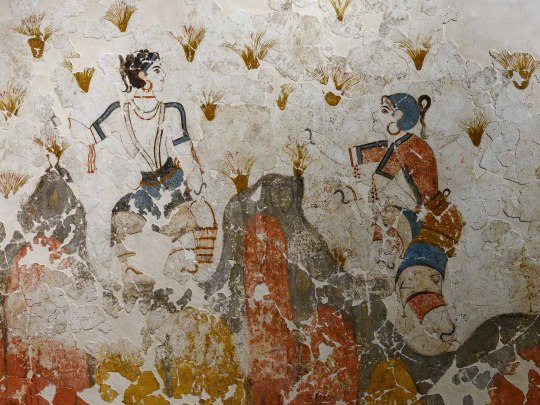
Another option is leaving the fringes loose, as seen in the Akrotiri frescoes from Xeste, room 3:
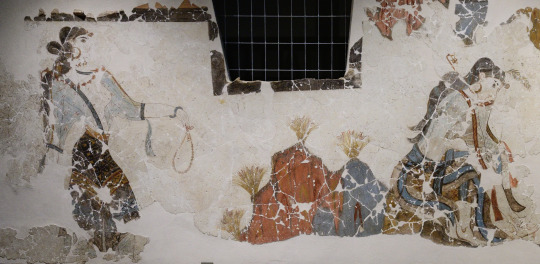
The final garment was super comfy, actually! It's much simpler to create than I thought it would be based on the frescoes, which made it all feel pretty magical when everything came together. I did think it was a little unusual how tailored this garment is, and the potential waste of fabric that comes from a shaped garment, especially compared to how later ancient greek clothing was mainly rectangles. I don't know enough about bronze-age and earlier clothing to have any idea how typical this was, since I'm extremely Not an expert on this subject, but am always open to learning more!
510 notes
·
View notes
Photo

Traditional Chinese hanfu in Tang dynasty style
#Tang Dynasty#costume reconstruction#costume recreation#historical costume#chinese dress#chinese costume#mdpchina#costume#china#asian costume#asian dress
88 notes
·
View notes
Text
Over the centuries, English lost many Germanic words. A lot of these were replaced by borrowings from French, while German, Dutch and Frisian often preserved their Germanic cognates. What would the lost English words look like if they still existed? Here are twelve of them.
On my Patreon you can read how I reconstructed all of the words in the second column.
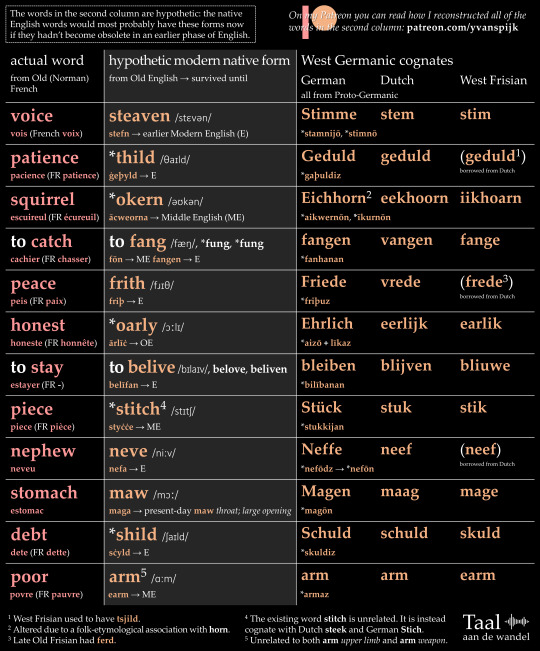
#historical linguistics#linguistics#language#etymology#english#french#dutch#german#frisian#old french#proto-germanic#old english#middle english#hypothetical#reconstruction
199 notes
·
View notes